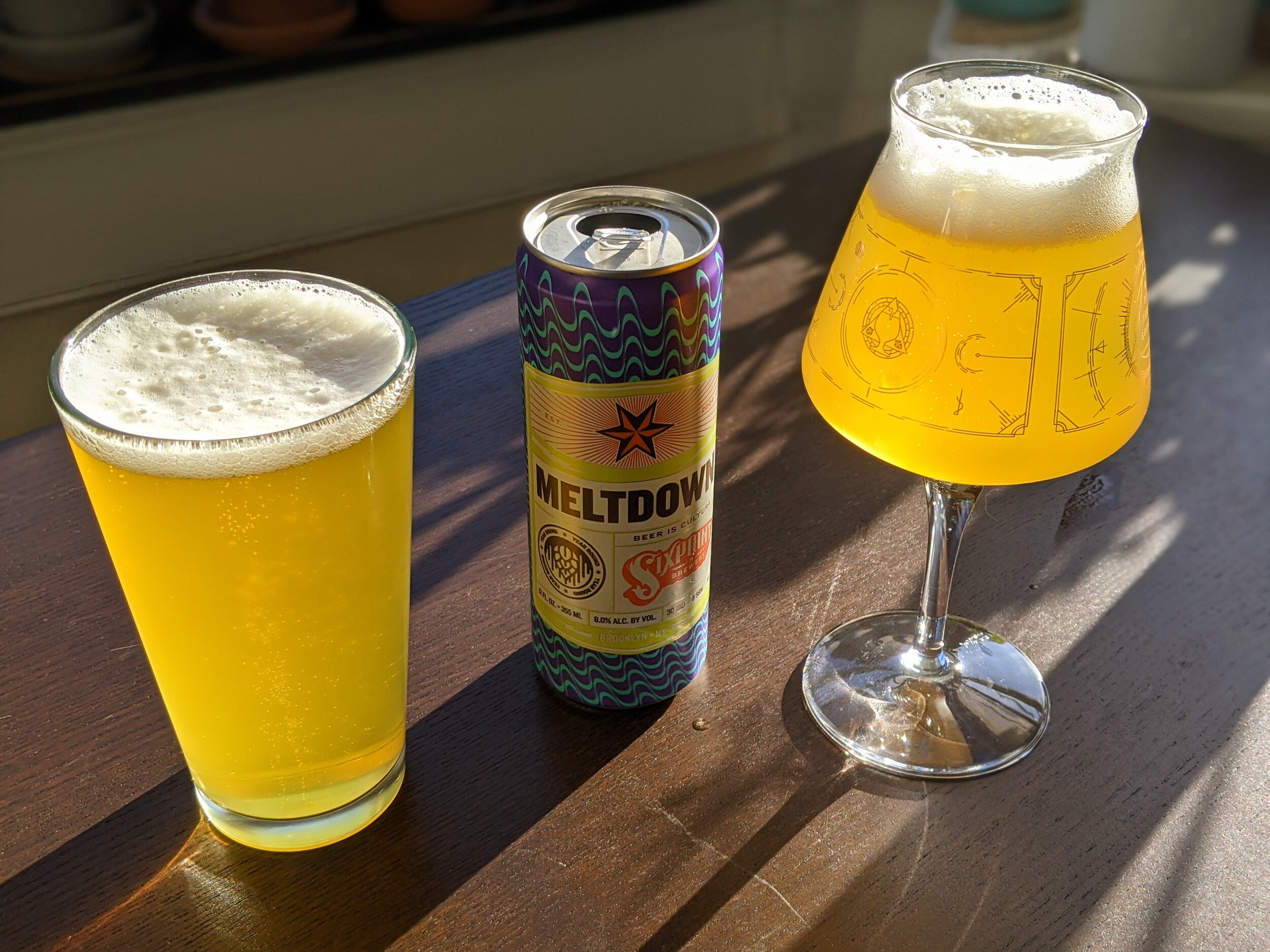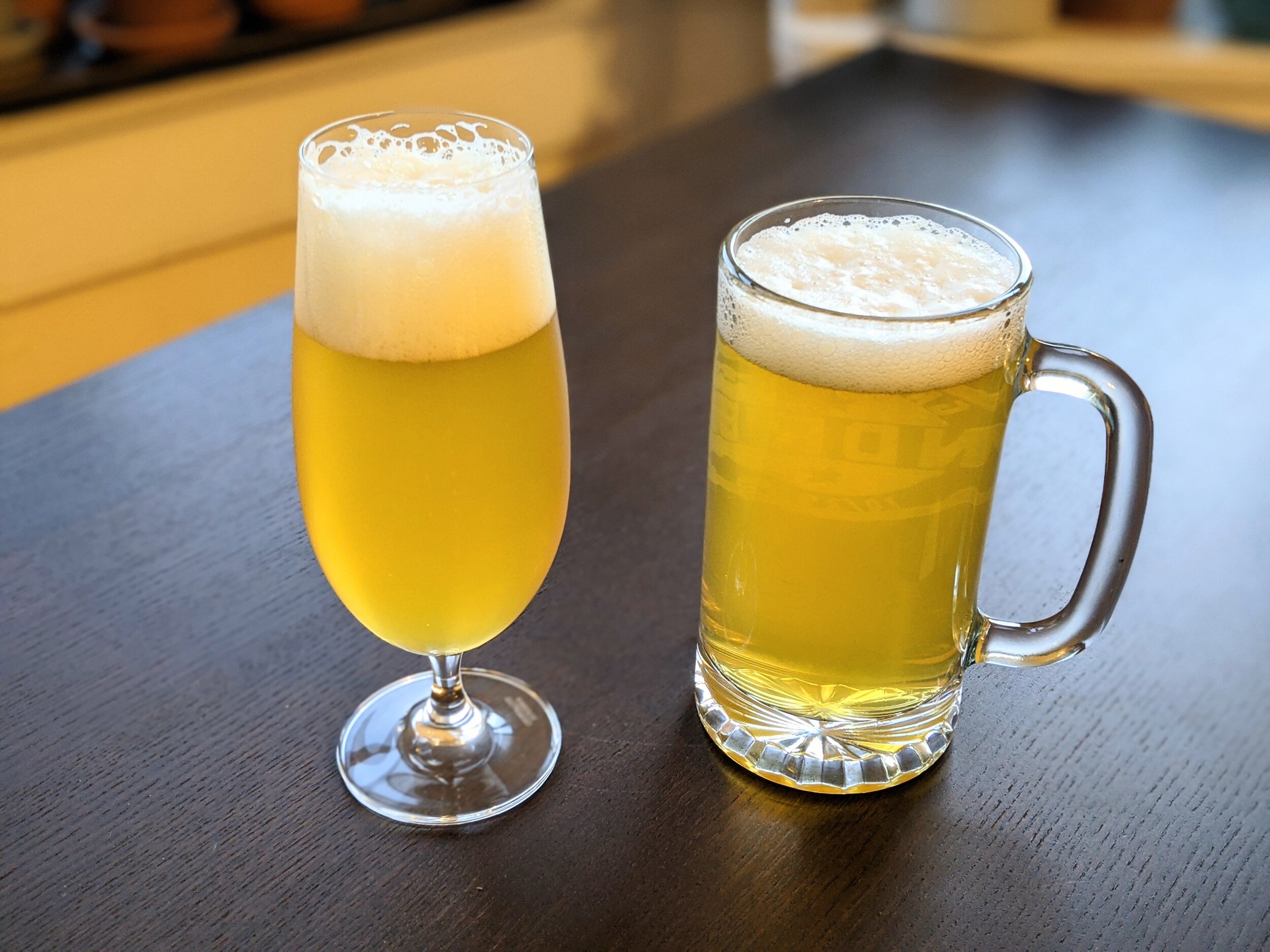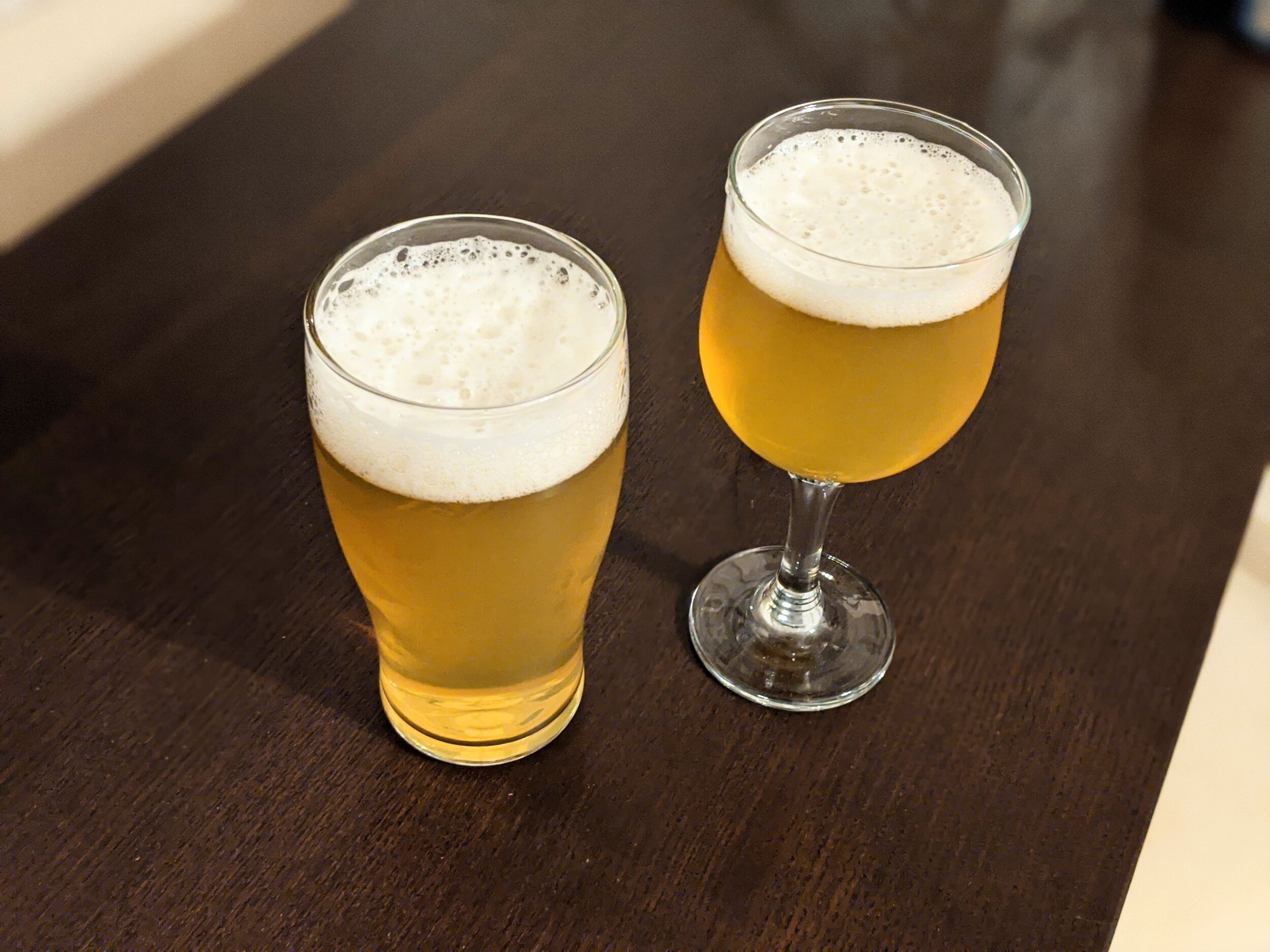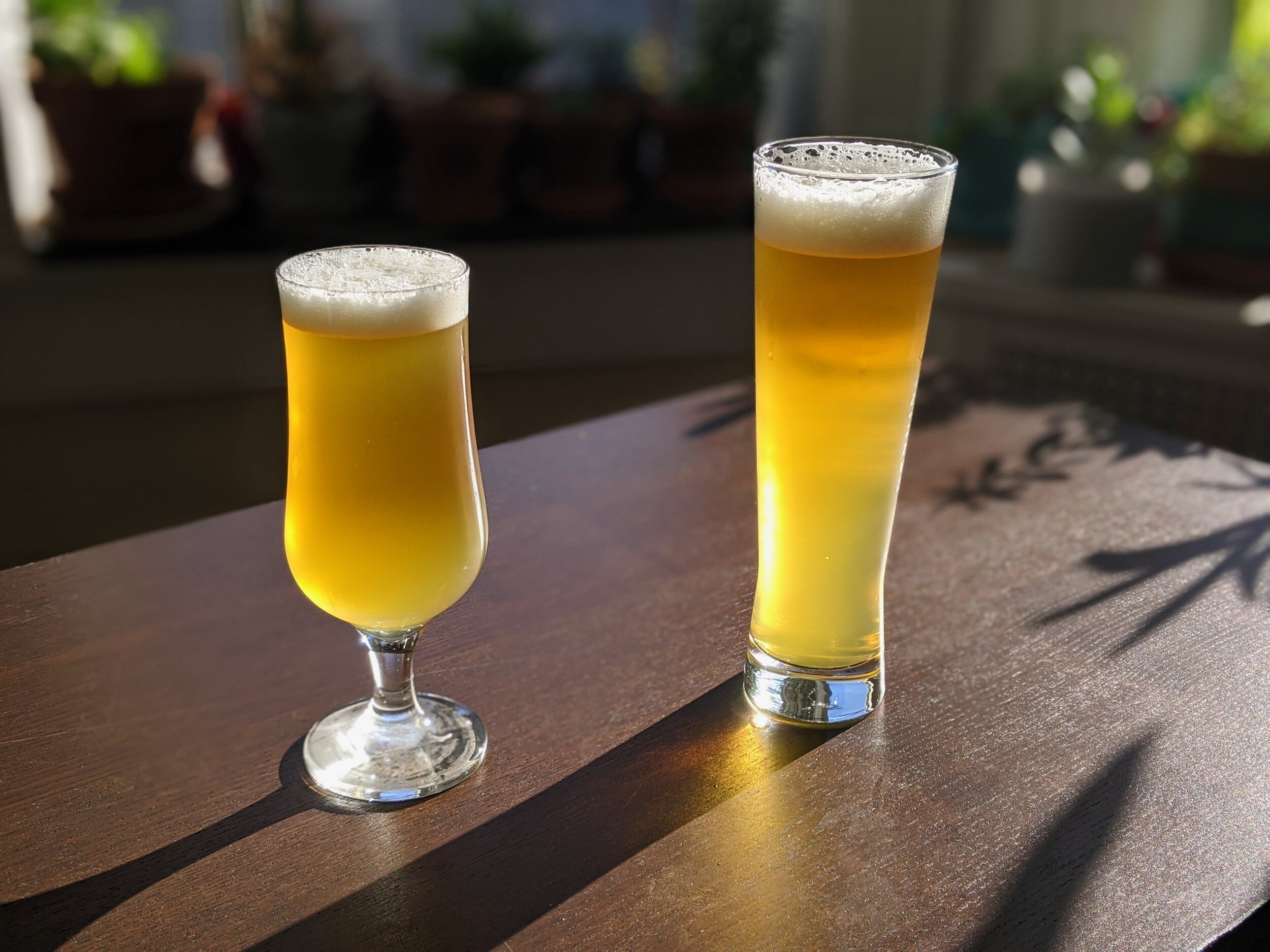How Much Does Beer Glass Shape Matter?
The glasses, courtesy of Andrew Tobia
We compared 10 beer glasses side by side
Every few years you hear about a new type of beer glass, the ideal type of beer glass.
“This glass will revolutionize beer drinking!” “This is the last beer glass you’ll ever need to buy!”
Many specialty beer glasses have made such lofty boasts: think the Samuel Adams “Perfect Pint.” Most recently, claims like that have been made about the teku.
The teku is an angular tulip-style glass developed by Italian brewer Teo Musso and Italian beer writer and expert Lorenzo “Kuaska” Dabove. Its major claim is that it really accentuates a beer’s aroma, therefore unlocking its true flavor.
I recently found myself in possession of a teku glass. When I finally poured a beer into it and sat down to enjoy … I was frankly disappointed. My teku drinking experience was not markedly different than using any old glass.
But it got me thinking, if this glass isn’t doing what it says it does, are any of them?
The Method
So I hatched a plan, collected 10 differently shaped beer glasses, and chose a beer.
Sixpoint’s Meltdown, in an American pint and a teku
The beer I picked is Sixpoint Brewery’s Meltdown, a New England-style double IPA made with Mandarina Bavaria and Mosaic hops. Unlike most other NEIPAs, which trend tropical and fruity, Meltdown is dominated by piney resin notes, bracketed by stone fruit briefly up front and lingering citrus on the tail end.
I picked this beer because its tasty, available, and, importantly, because I’m familiar with it. I picked a single beer, as opposed to matching styles to glasses, to have a control for the experiment. (After all, if a weizen glass is made to maintain the head of a wheat beer, it follows logically that it’ll maintain the head of a NEIPA as well.)
As for the glasses, I picked a collection of what I had, what I could borrow from friends, and what I could find, reasonably priced, at stores local to me. I think what I came up with is pretty representative of what’s available to the average beer drinker:
American Pint — Also known as a shaker pint, this is the go-to across the country. No particular characteristics are ascribed to it.
Teku — The youngest shape on the list, the teku was designed to trap head and enhance aroma for any beer style.
Beer Mug — Nothing fancy here, just a good, hefty mug with a generous handle, which should slow a beer’s warming.
Flute — Short-stemmed, tall, and skinny, a flute is designed to show off carbonation, hold a head, and emphasize a beer’s nose. It’s similar to Riedel’s Veritas shape, or the Stela Artois glass.
Tulip Pint — There seems to be no universal name of this glass shape, as I’ve seen it called tulip pint, French imperial pint, or simply “stout glass”. Whatever you call it, this pint bulges in the center and slightly curves inward at the rim for aroma retention.
Goblet — Wide and shallow, goblets are most often recommended for heavier, malt-forward brews. The claim is the wide opening allows the full flavor and profile aromas to unfold.
Pilsner — Tall, skinny, and trumpeted, pilsner glasses are designed primarily for aesthetics. They excel at showcasing the golden hues and copious effervescence of lighter styles.
Tulip — The tulip I own is a bit slimmer than most, slightly less flared at the rim, something like a cross between a flute and a thistle. Generally, the shape is known for holding a thick foam on top and emphasizing hop-related flavors.
Bruges — A big, chunky, flare-rimmed glass on a short stem, I’ve also seen this referred to as a Belgian or a tulip (though generally tulips trend skinnier). It does share the overall tulip shape and therefore is known for similar characteristics.
Weizen — This is basically a pilsner glass, but with a bit of an inward curve toward the top. Best for aesthetics and, thanks to the inward rim, accentuating aromas.
A flute and a beer mug
I tested glasses two at a time in 30-minute intervals, 10 minutes of which were spent holding the glasses (by the handle or stem when present). I measured the temperature immediately after pouring and again at the end of 30 minutes. I took small, tasting-style sips and breathed deeply of the aroma before every sip. I waited roughly one hour between tests, drinking water and snacking on crackers, to avoid palate fatigue (this is the cause of the constantly shifting light quality in the photos). I split the tests over two days.
The Testing
American Pint & Teku
I started testing with the American Pint and the teku, the glasses that put me onto this train of thought in the first place (the standard pint is my go-to glass, as it is for many). The Meltdown poured at a crisp 41 degrees — by the end of 30 minutes, the American pint had reached 46 while the teku remained at 42, so that’s the stem doing its job. Neither held the head for particularly long.
In terms of aroma, I noticed little difference in performance. In fact, I’d go so far as to say the pint performed more uniformly than the teku — when I first poured, the aroma from the teku was less pronounced than from the pint. From there it sort of varied, some sniffs giving me big fruity and resiny notes, others offering little to nothing.
I could detect no impact on flavor from either glass.
Flute & Mug
Something very interesting happened here: I pulled two cans of Meltdown from the fridge (same shelf) and poured them one after another with no delay. Despite this, the beer in the flute somehow registered at 38 degrees compared to the mug’s 43. I re-tested twice with two different thermometers and got the same results. I have no idea what thermodynamic properties are at play here (comment below if you do). At the end of the 30-minute testing window, the flute was still pretty chilly at 48 degrees while the mug, despite having a handle, rose all the way to 52 — perhaps its all the surface area?
A tulip pint and a goblet
Interesting happenings in the worlds of flavor and aroma, as well. While the mug steadily chugged along, performing much like the American pint, the flute changed things up. Aroma from the glass was notably stronger than from the mug, especially shortly after the pour, and was heavy on the resin notes. Sips from the flute brought a definite sharp, alcohol taste that I didn’t experience with any other glass.
My flute had a short stem that was awkward to hold.
Tulip Pint & Goblet
Not a lot to report here, I’m afraid. Both glasses started at 43 degrees — the tulip pint rose to 54 degrees over 30 minutes while the goblet, aided by its stem, rose to only 52. Neither held a head, though the tulip pint emphasized the aroma a bit more than the goblet, and held the emphasis for the entire 30 minutes.
Other than small temperature and aroma differences, these glasses performed almost identically.
A tulip and a pilsner
Tulip & Pilsner
Weird thermodynamics, again! Like the flute-mug round, I took two beers from the same shelf of the fridge and poured them at the same time: Despite this, the beer in the tulip measured at 39 degrees to the pilsner’s 41 (those temperatures rose to 52 and 54, respectively).
It was in these two glasses that I detected the most prominent changes in flavor. Sipping from the tulip, I got a lot of Meltdown’s sweeter and fruitier notes, specifically stone fruit like apricot. Sipping from the pilsner, the beer’s bitter and resiny notes were notably more prominent.
Neither held a head and neither presented differences in aroma from each other.
Bruges & Weizen
And we finish off the experiment with another round with little to report. Both glasses started at 41 degrees — the Bruges rose to 51, the weizen to 54. I tried so hard to detect a difference on the nose (I expected it from the weizen), but simply couldn’t, they were identical. The goblet ever-so-slightly emphasized resin flavors on the tongue.
Neither held a head.
The Results
A Bruges and a weizen
After two days of sipping, I have found that there can be some difference in drinking experience depending on the glass you use, more so in the realm of aroma than flavor.
Glasses that are narrower and, more importantly, have rims that curved inward (as opposed to straight up or outward) tended to present fuller, stronger aromatic profiles. Stemmed glasses (pretty obviously) kept beer colder for longer. Occasionally there was a small shift in flavor profile from one glass to another. Not a single glass held a head, even those that claim to (though to be fair, I suspect this has more to do with my pouring abilities and lack of keg/draft access than glass shape).
But it’s important to mention that I undertook this experiment looking for these differences, putting a lot of effort and focus into searching them out. If I was casually enjoying a beer at home, with friends, or at a bar or restaurant (whenever that’s possible again), I fully suspect that glass shape would have no notable impact on the experience.
The Verdict
Before writing this piece, I spoke to a friend of mine, a former executive at Heineken. Perhaps unsurprisingly, he had very strong feelings on glass shape — he believes unshakably that every beer style has a “correct” glass style to go along with it.
While I respect his opinions on most things, I can’t in good conscious recommend that you go out and buy a different glass for every beer you like to drink. Unless you’re a brewer working hard to refine a recipe or maintain strict QC standards, it simply isn’t worth the money or the brain space.
Pour your beer into whatever you have on hand with confidence — it’ll do you just fine.






